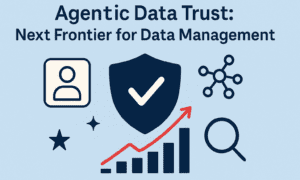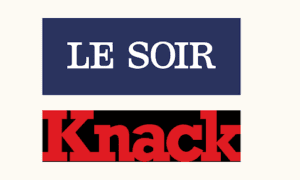A landmark study has emerged from the intersection of enterprise technology and data strategy, offering organizations a blueprint to integrate financial planning with customer relationship management. At the center of this research is May Equitozia Eyeregba, a seasoned academic affiliated with the University of Sunderland, whose work on unified data management is shaping enterprise practices worldwide.
The paper, titled “A Conceptual Framework for Unified Financial and Customer Data Management Using CRM and Planful Systems,” was published in the International Journal of Social Science Exceptional Research. It proposes a comprehensive model for integrating Customer Relationship Management (CRM) platforms with Planful systems to create a seamless data environment. This model equips businesses to better align financial operations with customer engagement and decision-making.
Eyeregba’s contribution to the research is significant. Drawing on her expertise in systems thinking, digital operations, and performance optimization, she developed core elements of the framework that demonstrate how businesses can move from fragmented data processes to unified strategic planning. Her analytical approach informed the study’s integration logic, implementation roadmap, and predictive planning insights.

The research begins by identifying a key gap in enterprise data strategy. In most organizations, CRM platforms manage customer profiles, preferences, and interactions, while financial data is handled separately in tools like Planful. This siloed approach restricts visibility, impedes forecasting, and creates inefficiencies across departments. Eyeregba’s contribution focuses on demonstrating how this divide can be bridged using real-time data unification, allowing organizations to track how customer behavior directly impacts revenue, margins, and profitability.
In the section addressing CRM systems, Eyeregba reframed these platforms from their conventional function as sales and marketing tools to core financial enablers. CRM data—such as churn indicators, contact frequency, and support histories—can inform revenue models and resource planning when integrated with financial data. By elevating CRM from a tactical asset to a strategic component, Eyeregba positioned customer intelligence as a measurable input in corporate planning.
She further demonstrated how CRM insights can be used in financial performance tracking. For instance, linking CRM activity logs to financial dashboards allows executives to evaluate whether recent declines in sales correlate with customer satisfaction trends. This alignment gives decision-makers a direct view of how engagement outcomes affect financial metrics.
In addition to redefining CRM’s role, Eyeregba outlined how Planful systems can serve as dynamic forecasting tools when connected to customer activity data. Her model recommends that organizations move beyond static budgeting toward predictive financial planning. Rolling forecasts based on real-time CRM inputs enable finance departments to model various market scenarios with greater accuracy. This improves resilience, especially for companies operating in volatile markets.
A major emphasis in her section was on driver-based forecasting. Eyeregba showed how variables derived from CRM data—such as retention rates or campaign effectiveness—can act as financial drivers in Planful systems. Using historical patterns and customer segmentation, finance teams can build models that anticipate fluctuations in revenue and cost. This level of precision, she noted, was only possible when CRM and financial data are connected in a centralized, governed environment.
Eyeregba also contributed to the paper’s discussion on enterprise-wide decision-making. Integrated systems enable functional departments to share a common dataset, which strengthens alignment and reduces duplication of effort. For instance, sales and finance teams can jointly monitor the performance of new initiatives, while customer service can draw on financial impact data to prioritize service tiers. Her guidance made clear that this integration is not only a technological exercise but an operational shift toward collaboration.
The research acknowledges that unification poses technical and organizational challenges. In response, Eyeregba developed practical recommendations to guide implementation. She outlined the importance of structured data mapping and real-time synchronization between platforms. Because CRM and Planful systems often differ in data architecture, she emphasized the need for middleware solutions and API configurations tailored to business needs.
She also warned about the risks of inconsistent data quality. Redundant, outdated, or incomplete records can undermine system integrity. Eyeregba recommended rigorous validation procedures and organization-wide data governance policies, including assigning data ownership and standardizing terminology. She advocated for regular audits and monitoring dashboards to ensure the integrated system maintains reliability over time.
Beyond technical setup, she addressed organizational change management. Employees accustomed to separate systems may resist new workflows. Eyeregba proposed a structured training model that includes cross-functional use cases, stakeholder briefings, and hands-on onboarding sessions. Her emphasis was on empowering users with confidence and clarity about how integrated systems improve both individual tasks and collective results.
The paper includes a dedicated section on data privacy and compliance, which Eyeregba helped to develop. As customer and financial data merge, regulatory standards become more complex. Eyeregba identified that both systems store sensitive information protected under frameworks like the General Data Protection Regulation (GDPR) and the California Consumer Privacy Act (CCPA). She highlighted that integrated environments must be built with encryption protocols, access controls, and audit trails from the outset.
She also addressed ethical data use. Customers expect transparency about how their information is used. Eyeregba called for organizations to publicly share their data policies, implement user consent models, and offer opt-out features where required. She argued that respecting privacy strengthens trust and creates long-term value.
While the paper addresses present challenges, Eyeregba also contributed significantly to its future-facing direction. She outlined how artificial intelligence and machine learning could enhance the value of unified data systems. With predictive models trained on historical CRM and financial data, businesses can anticipate churn, suggest dynamic pricing, or optimize campaign timing.
Eyeregba proposed research into algorithms that detect patterns in customer engagement and tie them to financial risk. For example, a customer with declining engagement who previously accounted for high-margin sales may trigger early intervention. This would allow companies to act before revenue is lost. Such models, she argued, will enable real-time strategic responsiveness in increasingly competitive markets.
Another area she identified for future work is scalability. Many integration models are built for enterprise-level organizations with advanced IT infrastructure. Eyeregba stressed the need for modular, scalable versions that small and medium-sized enterprises (SMEs) can adopt without extensive budgets or specialized staff. She encouraged the development of plug-and-play solutions with user-friendly interfaces, backed by robust support systems. This would allow more businesses to benefit from unified data strategies without facing major adoption barriers.
She also recognized the influence of regulatory changes on system design. As governments refine data protection laws and financial reporting standards, unified systems must adapt. Eyeregba urged businesses to treat compliance as a core design principle, not a late-stage add-on. She advocated for closer collaboration between compliance officers, system architects, and data stewards during integration planning.
Overall, the paper provides a robust model for unifying CRM and Planful systems, with a strong emphasis on practical application, risk mitigation, and future readiness. While all authors contributed, May Equitozia Eyeregba’s work was central to shaping the research’s strategic, ethical, and predictive dimensions.
Industry analysts reviewing the study have pointed to its real-world relevance. The model has implications for finance departments, marketing teams, IT units, and executive leadership. By eliminating data silos and enabling real-time, cross-functional insight, the integrated system can reduce costs, improve forecast accuracy, and strengthen customer lifetime value.
Organizations that adopt this framework are positioned to make faster, more informed decisions. They can identify the financial impact of customer service issues, evaluate marketing returns in monetary terms, and optimize investment across segments. The paper’s value lies not just in theory but in its ability to guide business transformation.
Eyeregba’s role in this transformation continues beyond publication. She is currently involved in follow-up research projects focused on AI-assisted decision systems and low-code integration platforms for SMEs. Her work remains focused on equipping businesses to manage complexity with clarity and drive strategy through evidence.
Her academic record also includes research on digital operations, customer analytics, and risk-based forecasting. Her current projects examine how cloud architecture and automation frameworks influence enterprise agility, particularly in volatile markets. She is frequently invited to speak on issues of data governance and systems transformation, where her insight bridges academic research and operational delivery.
The research team included scholars from the United States and the United Kingdom, but Eyeregba’s systems-focused lens was instrumental in binding the paper’s architecture. From the data integration process to decision modeling, she contributed frameworks that simplify complexity and prioritize long-term value creation.
As data volumes increase and competition accelerates across sectors, the need for integrated decision support systems grows stronger. This study marks a step forward in that direction. Through her research and practical frameworks, May Equitozia Eyeregba is helping organizations take that step with confidence.
The full paper, “A Conceptual Framework for Unified Financial and Customer Data Management Using CRM and Planful Systems,” is available in Volume 2, Issue 1 of the International Journal of Social Science Exceptional Research. It is accessible via DOI: https://doi.org/10.54660/IJSSER.2023.2.1.249-255


































